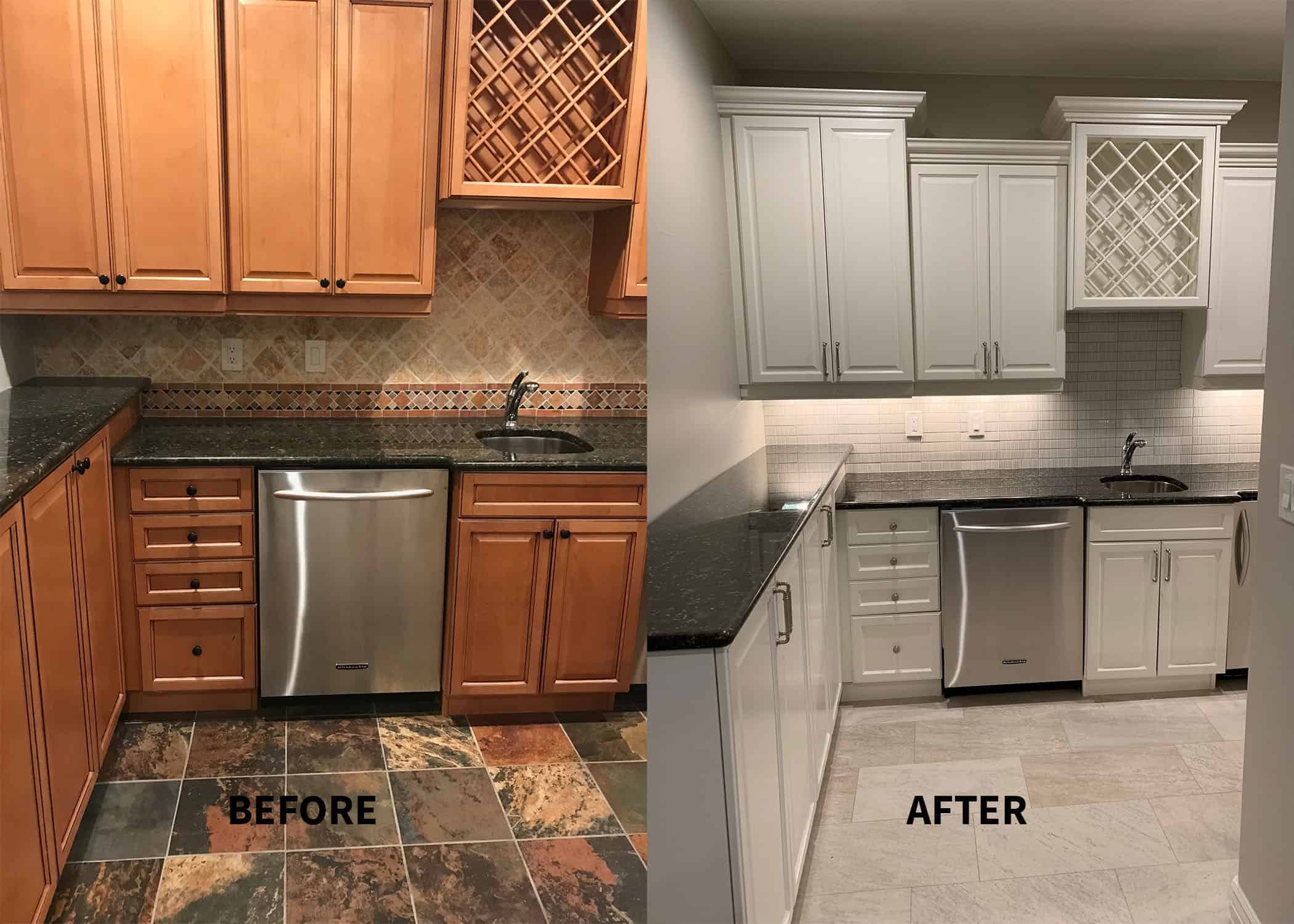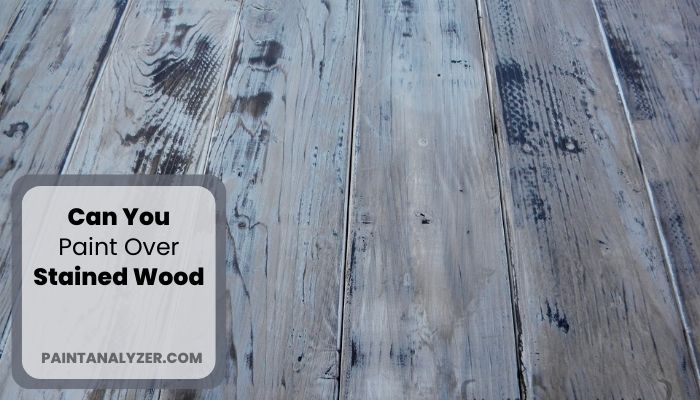Assessing Cabinet Condition

Before you start painting your fake wood cabinets, you need to assess their condition. This involves understanding the type of finish they have and identifying any potential issues that could affect the paint adhesion and overall finish.
Types of Fake Wood Finishes
The type of finish on your cabinets will influence the preparation needed before painting. Here are some common fake wood finishes and their suitability for painting:
- Melamine: This is a plastic laminate that is often used on cheaper cabinets. Melamine is smooth and non-porous, making it difficult for paint to adhere. However, with proper preparation, it can be painted.
- Thermofoil: This is a type of plastic laminate that is applied to a substrate using heat and pressure. Thermofoil is often textured to resemble wood grain. Like melamine, it can be difficult to paint, but it can be done with the right techniques.
- Vinyl: This is a type of plastic film that is applied to cabinets using adhesive. Vinyl is often used to create a wood-grain effect. It can be painted, but the adhesive layer can make it difficult for paint to adhere.
- Painted Wood: This is the most common type of cabinet finish. Painted wood is typically made from MDF (medium-density fiberboard) or plywood and is covered with a layer of paint. This type of cabinet is the easiest to paint, as the existing paint layer provides a good surface for new paint to adhere to.
Inspecting Cabinet Surfaces
Before you start painting, it’s important to thoroughly inspect your cabinets for any damage, imperfections, and existing paint layers.
- Damage: Look for any cracks, chips, scratches, or dents. These should be repaired before painting.
- Imperfections: Look for any bumps, ridges, or uneven surfaces. These should be sanded smooth before painting.
- Existing Paint Layers: If your cabinets have been painted before, it’s important to assess the condition of the existing paint. If it’s peeling, flaking, or cracking, it will need to be removed before painting.
Cleaning and Preparing the Surface
Once you’ve inspected your cabinets, it’s time to clean and prepare the surface for painting. This is an essential step, as it will ensure that the paint adheres properly and creates a smooth, even finish.
- Cleaning: Start by cleaning your cabinets with a mild detergent and water. This will remove any dirt, grease, or grime that could interfere with the paint adhesion. Make sure to dry the cabinets completely before moving on to the next step.
- Sanding: Sanding is essential for creating a smooth surface for the paint to adhere to. Use a fine-grit sandpaper to smooth out any imperfections and roughen the surface. This will help the paint to bond properly.
- Priming: Priming is a crucial step in preparing your cabinets for painting. It helps to create a smooth, even surface for the paint to adhere to. A primer will also help to seal the surface, preventing the paint from being absorbed by the wood.
Choosing the Right Paint: Can You Paint Over Fake Wood Cabinets
.jpg)
The right paint is crucial for achieving a beautiful and long-lasting finish on your fake wood cabinets. Choosing the wrong paint can lead to poor adhesion, cracking, peeling, or even a less-than-desirable appearance. Understanding the properties of different paint types and their suitability for your project is key to success.
Types of Paint for Cabinets
The type of paint you choose will depend on several factors, including the condition of your cabinets, the desired finish, and your budget. Here’s a breakdown of popular paint types and their characteristics:
| Paint Type | Pros | Cons | Application Considerations |
|---|---|---|---|
| Latex Paint |
|
|
|
| Oil-Based Paint |
|
|
|
| Enamel Paint |
|
|
|
Choosing the Right Finish, Can you paint over fake wood cabinets
The finish you choose for your cabinets will affect their overall appearance and durability. Here’s a breakdown of common finishes and their characteristics:
“A high-gloss finish will reflect more light, creating a shiny, polished look. This finish is best suited for cabinets that are not used frequently, as it can show fingerprints and smudges easily.”
“A semi-gloss finish offers a balance of shine and durability. It is a popular choice for kitchens and bathrooms because it is easy to clean and resists moisture.”
“A satin finish has a soft sheen that is not as reflective as a gloss finish. It is a good choice for cabinets that are used frequently, as it hides imperfections and fingerprints better.”
“A matte finish has a flat, non-reflective appearance. It is a good choice for cabinets that are used frequently and need to be easy to clean, but it can show imperfections more easily.”
Primer for Fake Wood Cabinets
A primer is essential for creating a smooth, even surface for paint to adhere to, especially on fake wood cabinets. Primers help to seal the surface, prevent the paint from absorbing into the wood, and create a uniform base for the topcoat.
“A good primer will create a barrier between the paint and the fake wood, preventing the paint from reacting with the laminate and causing discoloration or peeling.”
“Choose a primer specifically designed for laminate surfaces. These primers are formulated to provide optimal adhesion and prevent the paint from lifting or cracking.”
Painting Techniques and Tips

Painting fake wood cabinets can be a rewarding project, transforming your kitchen or bathroom into a stylish and modern space. Achieving a professional-looking finish requires careful preparation, the right painting techniques, and attention to detail.
Preparing the Cabinets for Painting
Before applying any paint, thorough preparation is essential for a smooth, long-lasting finish. This step ensures the paint adheres properly and prevents imperfections from showing through.
- Clean the Cabinets: Start by cleaning the cabinets with a mild detergent and water. Remove any grease, dirt, or grime that could interfere with the paint’s adhesion. For stubborn stains, consider using a degreaser.
- Sand the Cabinets: Sanding helps create a smooth surface for the paint to adhere to. Use fine-grit sandpaper (120-180 grit) to lightly sand the cabinet surfaces, removing any imperfections or raised grain. Always sand in the direction of the wood grain to avoid scratches.
- Fill Gaps and Cracks: Use wood filler to fill any gaps, cracks, or holes in the cabinets. Apply the filler with a putty knife, smoothing it out evenly. Let the filler dry completely before sanding it smooth.
- Tape Off Areas: Use painter’s tape to protect areas you don’t want to paint, such as hardware, countertops, or walls. Press the tape firmly to ensure a clean line.
- Prime the Cabinets: Priming creates a uniform surface for the paint and helps it adhere better. Choose a primer specifically designed for cabinets or for use on previously painted surfaces. Apply the primer with a brush or roller, using thin, even coats. Let the primer dry completely before moving on to the next step.
Applying Paint Coats
With the cabinets prepped and primed, you’re ready to apply the paint. Using the right techniques ensures a smooth and even finish.
- Choose the Right Paint: Select a high-quality paint designed for cabinets or trim. Acrylic latex paint is a popular choice for its durability, ease of application, and low odor.
- Apply Thin Coats: Apply thin, even coats of paint using a brush, roller, or spray gun. Too much paint can lead to drips and runs. Allow each coat to dry completely before applying the next.
- Use a Brush for Detail Work: For corners, edges, and intricate details, use a high-quality angled brush. Apply paint in smooth, even strokes, working in the direction of the wood grain.
- Use a Roller for Large Surfaces: For larger flat surfaces, use a roller with a nap that is appropriate for the paint type. Roll the paint in smooth, even strokes, overlapping each stroke by about 50%.
- Sand Between Coats: Lightly sand the painted surface with fine-grit sandpaper (220 grit) between coats. This helps create a smooth, even finish and prevents brush strokes or roller marks from showing through.
Finishing Touches
Once the paint is dry, add the finishing touches to complete your cabinet makeover.
- Remove Tape: Carefully remove the painter’s tape after the paint has dried completely. Peel the tape back slowly to avoid pulling up any paint.
- Clean Up: Clean any paint spills or drips with a damp cloth. Use a paint thinner or mineral spirits to clean brushes and rollers.
- Apply a Top Coat: Consider applying a clear top coat to protect the painted surface and enhance its durability. A polyurethane or varnish top coat can provide added protection against scratches, water damage, and fading.
- Replace Hardware: After the paint is completely dry, replace any cabinet hardware.
Can you paint over fake wood cabinets – Yo, if you’re thinkin’ about paintin’ over those fake wood cabinets, it’s totally doable, man. But if you’re tryin’ to make a small attic bedroom feel less cramped, check out this low ceiling small attic bedroom design guide. They’ve got some sick ideas to make that space feel way bigger, and then you can paint those cabinets to match the vibe.
It’s all about making that space your own, right?
Yo, so you wanna paint those fake wood cabinets? Totally doable, man. But if you’re tryna make your room look fire, check out this guide on arranging a small bedroom with a queen bed. It’s all about maximizing space and making your room look dope, just like those fresh painted cabinets.
